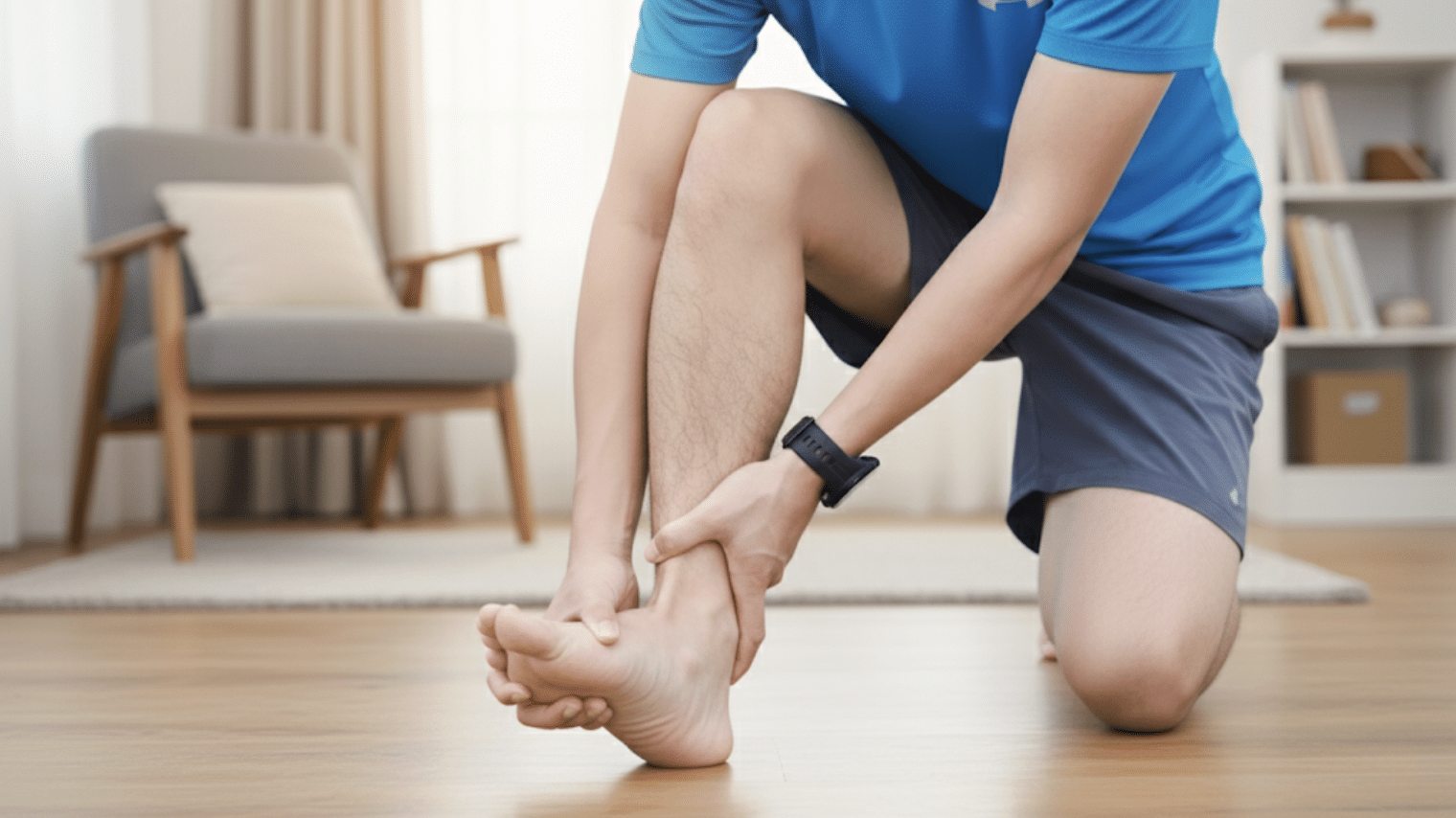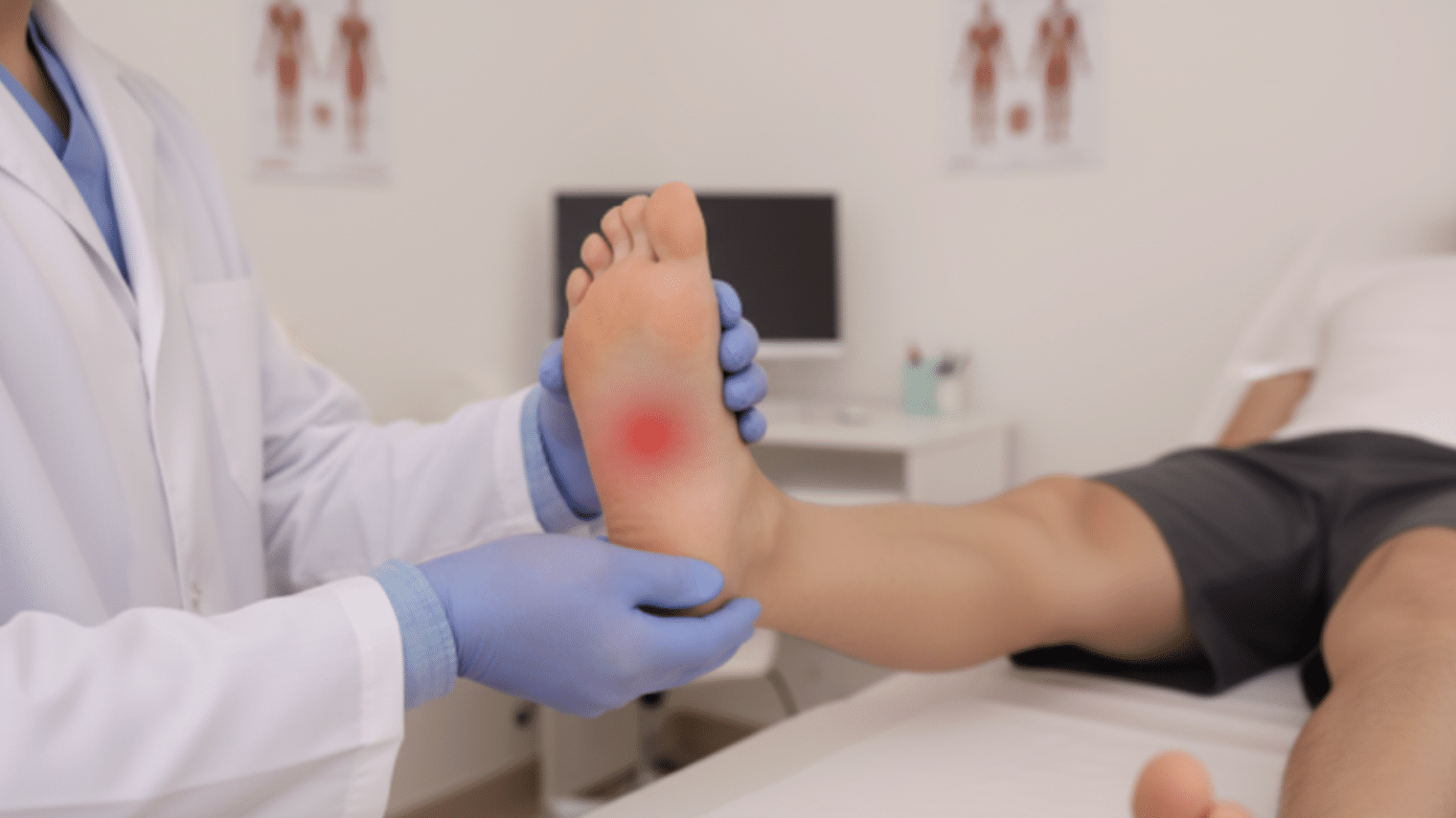Waking up with sudden sharp pain in my foot, or feeling a jolt when I step off the stairs, always catches me off guard.
Sometimes the pain comes out of nowhere, which makes it even more confusing and worrying. I know how unsettling it can be when your foot suddenly hurts without any clear reason.
In this post, I want to walk you through some common causes of sudden foot pain that I’ve learned about, share simple ways to manage the discomfort at home, and help you understand when it’s important to see a doctor.
If you’ve ever wondered, “Why does my foot hurt all of a sudden?” this guide should fill in the blanks and give you practical steps to feel better.
What Does “Sudden Foot Pain” Mean?
Sudden foot pain means experiencing pain in your foot that starts unexpectedly, without any obvious cause like a fall or injury. It can feel very different depending on the situation.
Sometimes it’s sharp and stabbing, other times it might burn, throb, or simply feel sore. Some people even experience numbness or tingling.
The pain can show up in various spots on your foot: your heel, the arch, the ball of your foot, the top, your toes, or the sole.
This wide range of sensations and locations can make sudden foot pain feel confusing, but understanding these different types helps in figuring out what might be causing it and how to address it properly.
Common Causes of Sudden Foot Pain Without Injury

Sudden foot pain without a clear injury can stem from a variety of causes. Understanding these common reasons helps in identifying the source of your discomfort and deciding the best course of action.
Here are some typical causes explained in detail:
1. Plantar Fasciitis Flare
Plantar fasciitis is inflammation of the thick band of tissue (plantar fascia) that connects your heel to your toes. This condition often causes sharp pain in the heel or arch, especially with the first steps in the morning or after resting.
Flare-ups can be triggered by prolonged standing, new physical activities, or improper footwear. The pain usually eases with movement but can return after inactivity. Managing flare-ups early helps prevent more severe chronic pain.
2. Tendonitis or Tendinopathy
Tendonitis involves inflammation, while tendinopathy refers to degeneration of tendons due to overuse. In the foot, common tendons affected include the Achilles and posterior tibial tendons.
Small activity changes like starting a new workout or increased walking often precipitate pain, swelling, and stiffness along the tendon. Without proper rest and treatment, tendonitis can worsen, making movement painful.
3. Nerve Issues / Neuropathy
Nerve-related foot pain arises from problems such as pinched nerves, diabetic neuropathy, or tarsal tunnel syndrome. These conditions cause burning, tingling, numbness, or electric shock-like sensations.
The pain may be sudden and worsen with pressure or specific movements. Nerve damage or compression affects sensation and motor function, complicating walking and balance.
4. Stress Fracture
Stress fractures are tiny cracks in bone caused by repetitive pressure or overuse. Athletes or people who increase activity suddenly often develop these fractures in the foot bones.
Pain may start mild but can suddenly intensify, becoming sharp and localized. Swelling and tenderness occur at the fracture site. Rest and medical evaluation are crucial to prevent worsening, as continued activity risks complete fractures or long-term damage.
5. Gout
Gout occurs when uric acid crystals accumulate in joints, causing sudden, intense inflammation. The big toe is a common site, with symptoms including severe pain, redness, warmth, and swelling.
Attacks often begin at night, catching people by surprise. Gout can be triggered by diet, alcohol, or medical conditions affecting uric acid levels. Timely treatment with medication and lifestyle adjustments helps reduce flare frequency and severity.
6. Arthritis Flares
Arthritis in the foot, including rheumatoid and osteoarthritis, can suddenly flare, causing joint pain, swelling, and stiffness. These flares often result from underlying joint damage, infection, or changes in weather.
The affected joints may become tender, restricting movement and making walking difficult. Managing arthritis flares involves medication, physical therapy, and lifestyle changes to reduce inflammation and maintain joint function.
7. Morton’s Neuroma
Morton’s neuroma is a thickening of nerve tissue between the toes, often between the third and fourth toes. It causes sharp, burning foot pain, tingling, or numbness that worsens with walking or tight shoes.
Pressure on the nerve from repetitive irritation or footwear compresses it, leading to discomfort. Treatments include shoe modifications, orthotics, and sometimes injections or surgery in severe cases.
8. Joint Problems
Joint issues such as bursitis (inflamed fluid sacs) and capsulitis (ligament inflammation) cause localized sudden foot pain. These often result from repetitive pressure, poor foot mechanics, or ill-fitting shoes.
Symptoms include swelling, tenderness, and restricted joint movement. Without proper care, these conditions can become chronic and interfere with daily activities. Rest, ice, and footwear changes usually help reduce symptoms.
9. Circulatory or Vascular Causes
Circulatory problems like deep vein thrombosis (DVT) or peripheral vascular disease reduce blood flow to the foot causing pain. DVT often involves swelling, redness, and warmth, signaling a clot that requires urgent medical care.
Peripheral vascular disease causes cramping or aching pain due to narrowed arteries, worsening with activity and improving with rest. Early detection and treatment are vital to prevent serious complications such as tissue damage or embolism.
10. Infection
Foot infections, particularly in people with wounds or diabetes, can cause sudden, severe pain along with redness, swelling, and warmth. Infections may develop unnoticed, sometimes entering through small cuts or ulcers, posing a risk of rapid spread.
Immediate medical attention is necessary to prevent complications like abscesses or amputations. Proper wound care and monitoring in high-risk individuals are essential for prevention.
Other Contributing Factors
Several lifestyle and external factors can worsen or trigger sudden foot pain. Wearing ill-fitting shoes or high heels creates pressure points that irritate tissues. Sudden weight gain adds stress to the foot’s structures. Rapid changes in activity levels without stretching increase injury risk, as do walking on hard surfaces.
Quick Assessment Framework for Foot Pain Diagnosis

When looking at foot pain, it helps to have a clear framework. Below are key points that can guide a quick assessment and make the diagnosis easier:
- Location Specificity Matters: Sharp heel pain suggests plantar fasciitis, while dull arch pain often indicates structural issues
- Timing Reveals Triggers: Morning stiffness points to inflammatory conditions, post-activity pain suggests overuse injuries
- Visual Cues Guide Urgency: Swelling, redness, warmth, or fever require immediate medical attention for possible infection
- Weight-bearing Test Differentiates Causes: Pain that worsens with standing typically indicates mechanical problems versus nerve issues
- Medical History Provides Context: Diabetes increases infection/ulcer risk, while previous injuries may cause recurring biomechanical problems
Use this systematic approach to narrow down potential causes and determine whether immediate medical care is needed.
Home Care / First Aid Remedies
Start with basic care measures before progressing to targeted treatments. When foot pain strikes, these safe and effective home remedies can provide immediate relief and support the healing process:
Immediate Pain Relief Measures
- R.I.C.E. Protocol: Rest the foot, apply ice for 15-20 minutes, use a compression wrap, and elevate above heart level
- Over-the-Counter Medications: Take NSAIDs (ibuprofen, naproxen) or acetaminophen as directed for pain and inflammation
- Therapeutic Foot Soaks: Use warm water with Epsom salt or alternate warm/cold soaks to reduce swelling and tension
- Activity Modification: Temporarily avoid high-impact activities and prolonged standing that worsen symptoms
Supportive Care and Recovery
- Gentle Stretching Exercises: Perform calf stretches, plantar fascia stretches, and toe flexor stretches to improve flexibility
- Proper Footwear Support: Wear cushioned shoes with arch support and avoid walking barefoot on hard surfaces
- Self-Massage Techniques: Use a foot roller or a tennis ball to massage the sole and release muscle tension
- Gradual Activity Return: Slowly resume normal activities while monitoring pain levels and avoiding re-injury
These home remedies work best when applied consistently and combined with appropriate rest. Seek medical attention if pain persists beyond a few days or worsens despite treatment.
Diagnosis & Treatment for Sudden Foot Pain
When sudden foot pain doesn’t improve with rest or basic home remedies, a healthcare professional may recommend both diagnostic tests and targeted treatments.
| Category | Method/Treatment | Purpose/Features |
|---|---|---|
| Diagnostics | Physical Examination | Assesses foot structure, motion, swelling, and gait |
| Imaging Tests | X-rays for fractures, ultrasound/MRI for soft tissue | |
| Lab Tests | Blood work for infection, gout, and inflammation markers | |
| Neurological Assessment | Tests nerve function and circulation problems | |
| Non-Invasive Treatment | Prescription Medications | Stronger anti-inflammatories for pain and swelling |
| Physical Therapy | Guided exercises for mobility and muscle strengthening | |
| Custom Orthotics | Specialized inserts and braces for proper foot alignment | |
| Night Splints | Maintains proper positioning during sleep for healing | |
| Invasive Treatment | Corticosteroid Injections | Targeted steroid shots for severe inflammation cases |
| Surgery | Reserved for structural damage or treatment failure |
Note: Treatment plans are individualized based on diagnostic findings, typically starting with conservative approaches before considering invasive options. Early evaluation prevents complications and improves outcomes.
When to Seek Medical Help for Sudden Foot Pain?
Most sudden foot pain improves with rest, ice, and home care. However, if symptoms persist beyond 1–2 weeks or certain warning signs appear, medical attention is essential.
Seek help if you experience severe pain that prevents bearing weight, significant swelling, redness, heat, or deformity, numbness or tingling, fever or signs of infection, or if you have underlying conditions like diabetes or poor circulation.
A healthcare provider will perform a physical exam, imaging tests like X-rays or MRI, and blood tests as needed.
Treatment may include immobilization, medications, or surgery, depending on the diagnosis. Early care helps prevent complications and promotes proper healing.
Final Thoughts
I’ve learned that sudden foot pain can stem from many causes, and while most cases improve with simple home care, knowing when to seek professional help is critical.
Rest, ice, supportive footwear, and gentle exercises often ease discomfort, but persistent pain or warning signs like swelling, numbness, or inability to walk require prompt medical attention.
Understanding these steps empowers me to manage my foot health wisely and avoid complications.
What about you? Have you ever had sudden foot pain, and what helped you? Drop your experience or questions in the comments; I’d love to hear from you!





